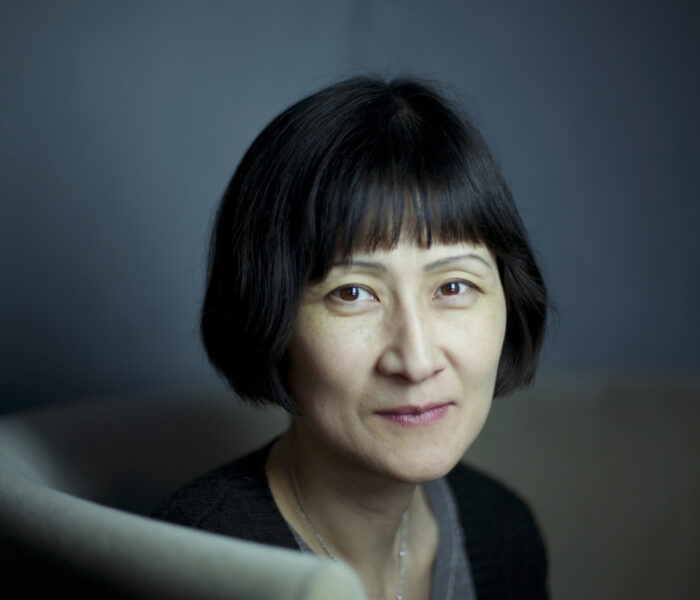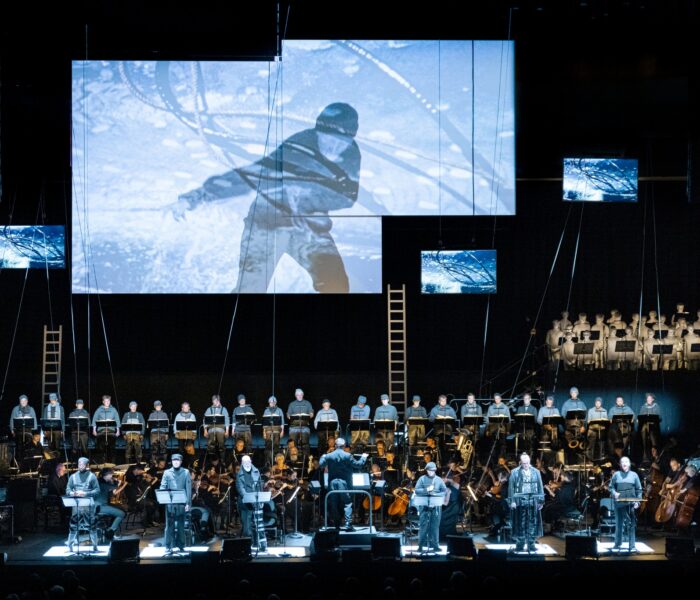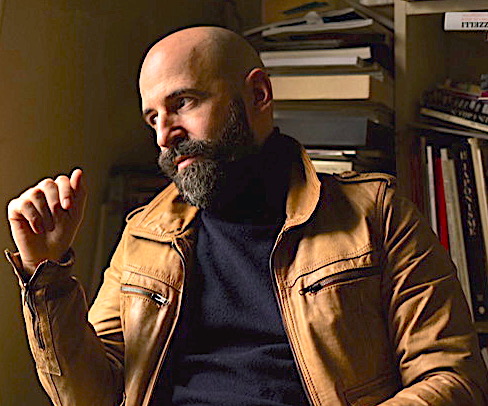Un concert, une œuvre. Pour ses débuts parisiens à la tête de l’Ensemble Intercontemporain, Pierre Bleuse a passé commande au compositeur écossais James Dillon, imaginant une nouvelle configuration scénique et des lumières spéciales qui placent le public au cœur du son et du mystère.
L’idée est de disposer l’ensemble des musiciens (excepté les percussions) sur une plate-forme circulaire qui va effectuer un tour complet durant les 75 minutes d’exécution. L’extrême lenteur de la rotation rend le mouvement quasi imperceptible et d’autant plus hypnotique, en phase avec le temps long sur lequel s’inscrit la nouvelle œuvre de Dillon. Cette révolution lente mais inexorable n’en modifie pas moins l’angle d’écoute des auditeurs selon le rapprochement ou l’éloignement des différents pupitres instrumentaux. Au centre du plateau sphérique, et légèrement surélevée, trône la harpe de Valeria Kafelnikov, figure centrale de ce “polyptyque”, seule à être éclairée au début de la pièce.
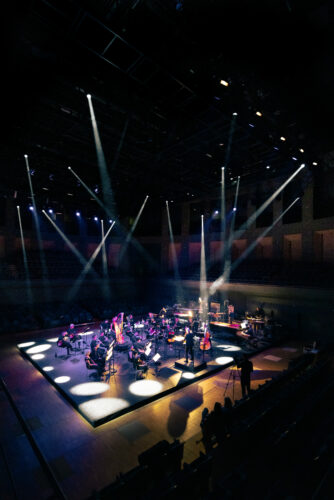
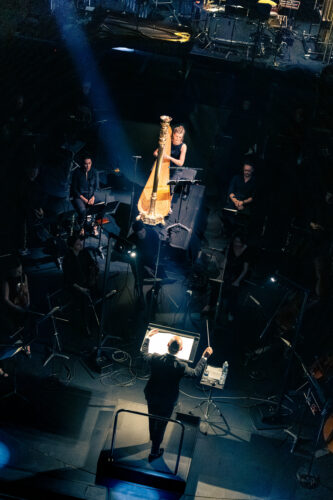

Polyptych : Mnemosyne… Acts of Memory and Mourning (Mnemosyne… Actes de mémoire et de deuil), est une partition débutée en 2022 sous le coup de deux événements douloureux pour le compositeur : la mort de sa mère et la déclaration de guerre de Vladimir Poutine. C’est au fil de la composition que la figure de Mnémosyne, personnification de la Mnémé (Mémoire) et mère des Muses, s’est peu à peu imposée au compositeur : la mémoire et ses associations multiples, charriant toutes sortes de pensées, souvenirs, images brassées, floutées, fragmentées, qui traversent l’imaginaire du musicien et donnent l’impulsion de cet ample mouvement rotatoire qui s’achève comme il a commencé. James Dillon dit s’être inspiré des retables de la Renaissance (nommés polyptyques) pour animer ce continuum sonore articulé en cinq “panneaux” de deux à trois “volets” chacun.
Les premières notes de la harpe aux sonorités archaïsantes, sur les effluves sombres et enveloppantes du tam, captent d’emblée notre écoute : chez les anciens, dit en substance le compositeur, « l’imagination était une forme de la mémoire ». Des sonneries retentissent (jeux de crotales, métaux scintillants, cloches-tubes) tels des signaux qui nous invitent au voyage, le compositeur embarquant son auditoire dans ce flux de mémoire louvoyant entre fulgurances et stases nostalgiques, transparence et opacité, dans une temporalité toujours fluctuante. Le set de percussions très déployé (peaux, métaux résonnants et claviers) est encadré par deux pianos et deux orgues utilisés pour les longues tenues épaissies par les cuivres graves qui texturent l’espace sonore.
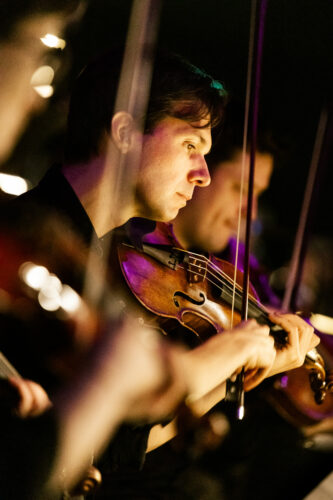

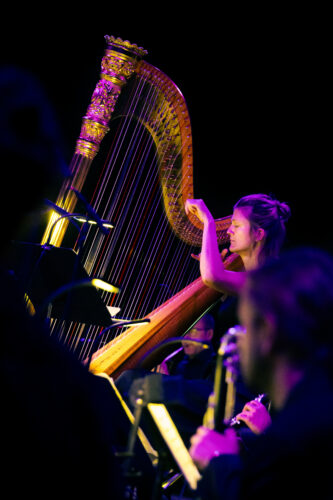
Dillon a écrit sa pièce pour les musiciens de l’EIC qu’il gratifie de superbes solos (flûte, violon, clarinette, vibraphone, marimba, piano, trompette bouchée, etc.), des petits concerts, seuls ou accompagnés, laissant apprécier une écriture toujours inventive et très ciselée. Il procède également à des alliages de timbres des plus surprenants au sein de nappes sonores longuement entretenues. Le déferlement des peaux au mitan de l’œuvre consacre le climax de la partition tandis qu’un choral de cuivres referme la trajectoire.
Les réminiscences sont en effet nombreuses au cours de l’œuvre, qui semblent couler librement à travers les mouvements ( effluves rythmiques de musique populaire, polyphonie ancienne, clarinette oiseau) et animent ce théâtre de la mémoire auquel les gestes récurrents et la lenteur du processus confèrent une dimension rituelle.
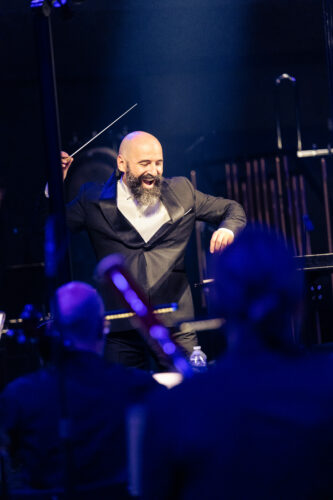
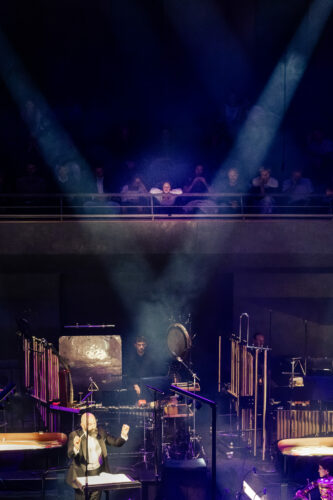
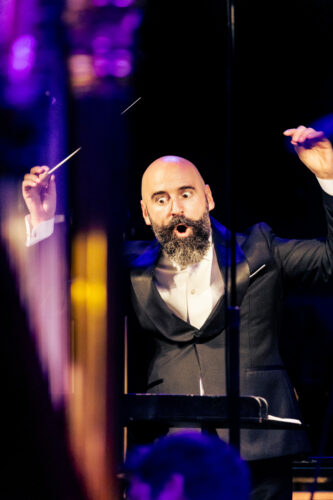
En maître de cérémonie, Pierre Bleuse conduit ses musiciens avec une rare concentration, donnant à « ce voyage à travers les rituels du souvenir et de la mémoire » un pouvoir tout à la fois immersif et hypnotique.
Michèle Tosi
Cité de la Musique, Paris, le 14-09-2023
James Dillon (né en 1950) : Polyptych / Mnemosyne… Acts of Memory and Mourning pour grand ensemble (CM). Ensemble Intercontemporain ; direction Pierre Bleuse.
Photos © Quentin Chevrier



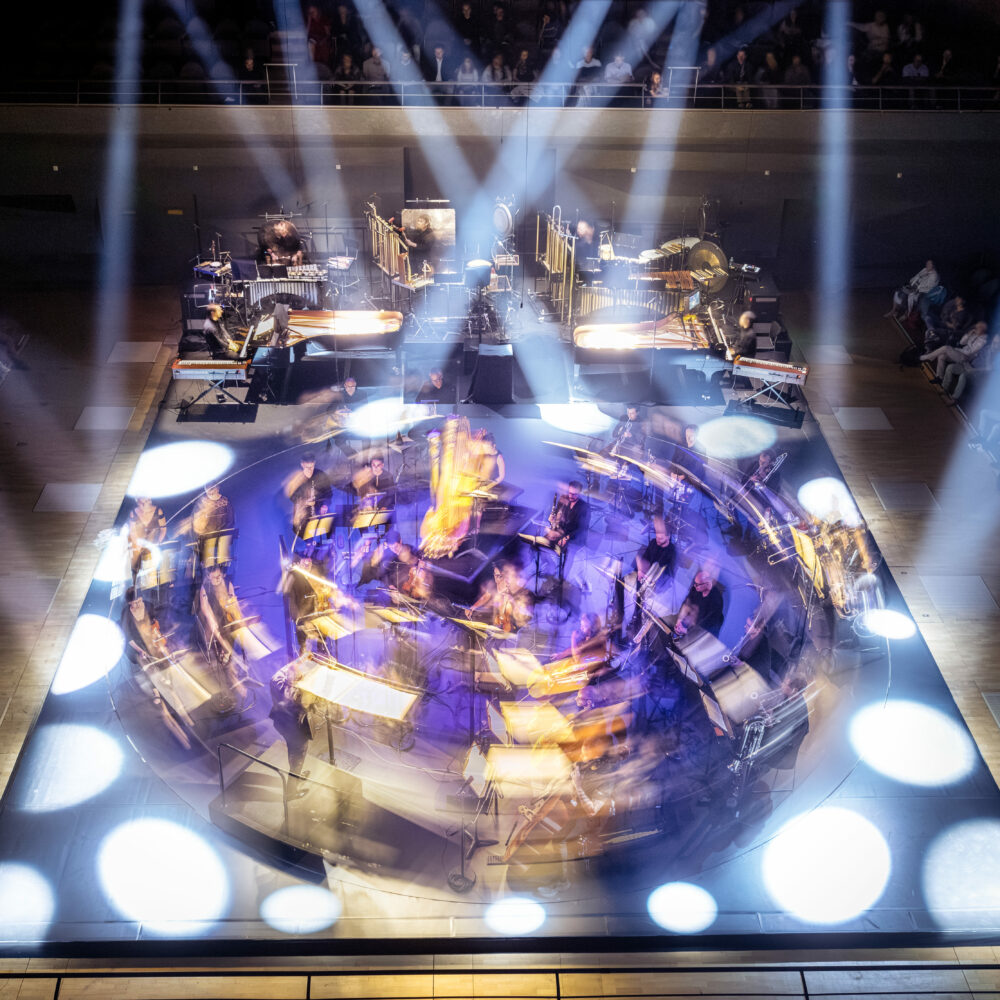)
